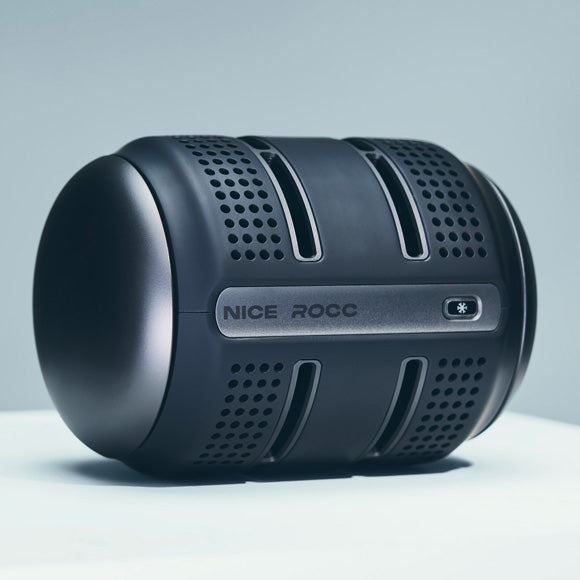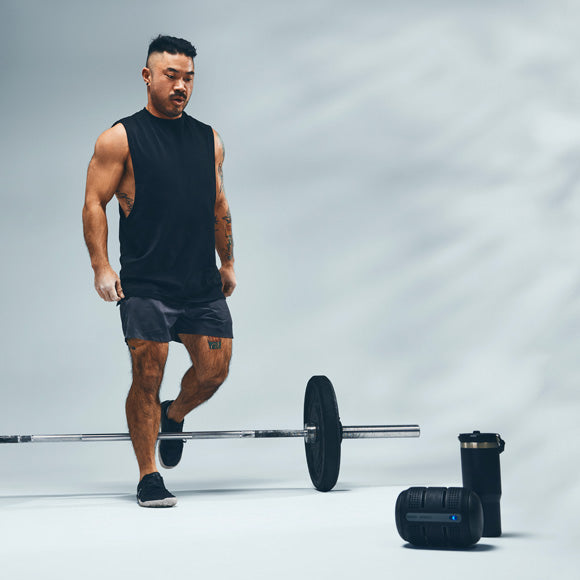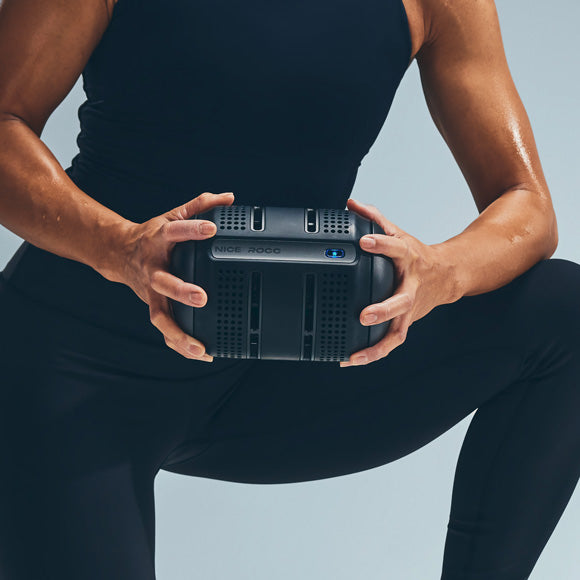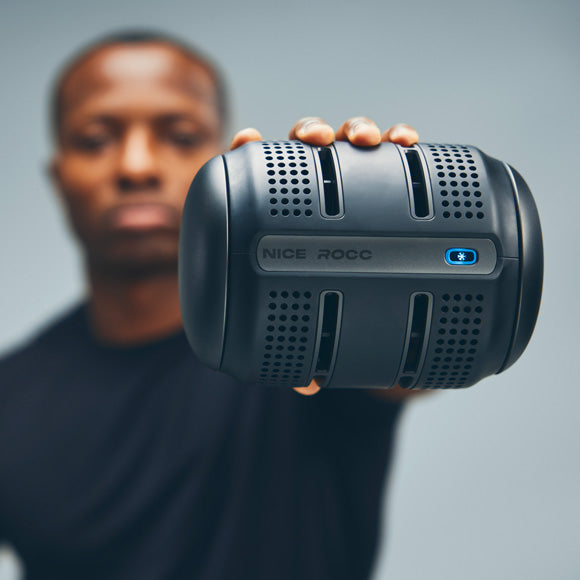Author: DR BEN COWIN, DC, ATC, ICSC, CLINICAL DIRECTOR
At NICE Recovery Systems, we believe that athletes and coaches benefit most when training decisions are grounded in science. By sharing emerging research on how core body temperature responds to lifting, and how cooling strategies may help, our goal is to provide valuable context that supports smarter performance and recovery choices.
When we think about exercise-induced heat stress, endurance sports like marathon running or cycling usually come to mind. But strength training also elevates core body temperature, triggering important physiological changes. While the thermal load is usually lower than endurance exercise, resistance workouts still challenge the body’s thermoregulation, with implications for performance, safety, and recovery.
How Much Does Core Temperature Rise in Strength Training?
Research consistently shows that core body temperature increases between 0.5 °C and 1.5 °C during strength training, depending on exercise intensity, rest periods, environment, and individual physiology.
- Moderate strength sessions (3–5 sets, multi-joint exercises, 70% 1RM) → ~+0.5–0.8 °C rise.
- High-intensity protocols (short rests, supersets, >80% 1RM) → ~+1.0–1.3 °C rise.
- Prolonged or circuit-style training in hot gyms can push body temp toward 38.5 °C.
Why Does Strength Training Increase Core Temperature?
The rise in body heat during lifting is primarily due to:
1. Metabolic heat production – ~75–80% of muscular energy is released as heat.
2. Intra-muscular occlusion – Heavy lifts reduce blood flow temporarily, limiting heat dissipation.
3. Nervous system activation – Sympathetic activity increases thermogenesis.
4. Short rest periods – Less cooling time between sets leads to cumulative heating.
Strength vs Endurance: Thermal Stress Comparison
- Strength training: Core temperature typically caps at ~38.0 °C.
- Endurance exercise: Can elevate core temp to 38.5–39.5 °C, especially in heat.
What the Research Shows
- García-Estañ López & Viscor (2025) → +1.37 °C rise in core temperature during high-intensity cycling. Frontiers in Physiology.
- Ragland et al. (2025) → measurable core temp increases during resistance protocols. Physiology.
- Sobolewski & Escalante (2025) → short rest periods amplify thermal strain, +0.8–1.2 °C. Clocks & Sleep.
- Jones et al. (2025) → palm cooling delayed fatigue and reduced rise. Int. J. of Exercise Science.
- Oliveira et al. (2025) → workout density correlates with higher thermal responses. Frontiers in Sports and Active Living.
- Ren (2025) → heat-acclimated athletes show smaller rises (~0.6 °C). Asia Sport Science Conference Proceedings.
- Cubel & Nybo (2025) → resistance training rarely exceeds 38.5 °C, unlike endurance. Temperature.
- Mittal (2025) → wearables confirm ~0.8–1.0 °C increases. Muscles in Motion.
Practical Implications for Lifters
Even if the risk of heat stroke is lower in resistance training compared to endurance exercise, thermal strain still affects:
- Performance → elevated body temperature accelerates fatigue.
- Recovery → higher temps increase cardiovascular strain.
- Safety → overheating risk in hot gyms without hydration.
Cooling & Hydration Strategies for Strength Training
1. Stay hydrated – ~500 ml water 1–2 hrs pre-training, sip during workouts.
2. Use cooling aids like Palm cooling lower rise by ~0.3 °C.
3. Manage rest intervals – Longer rests allow greater cooling.
4. Train in cooler environments – Gyms above 28–30 °C increase strain.
5. Heat acclimation – Gradual exposure reduces rise.
6. Wear breathable clothing – Improves sweat evaporation.
Key Takeaways
- Strength training raises core temperature by 0.5–1.5 °C.
- Increases depend on intensity, rest, hydration, and environment.
- Rarely crosses dangerous thresholds, but cooling strategies improve performance and safety.
Resistance training produces measurable increases in core body temperature, typically within a 0.5–1.5 °C range, with higher intensities and shorter rest intervals amplifying thermal strain. While these elevations are generally below thresholds seen in endurance exercise, they remain relevant to performance, recovery, and safety. Evidence indicates that targeted cooling strategies, including palm cooling, can attenuate thermal load and delay fatigue. NICE Recovery Systems shares this research to highlight the physiological basis for such approaches, reflected in the design and application of the NICE ROCC device.
References
- García-Estañ López, J., & Viscor, G. (2025). Emerging topics in human physiology. Frontiers in Physiology.
- Ragland, N., Asarpota Asnani, A., Roy, A., & Allen, D. (2025). Viewing a hot virtual reality augments thermoregulatory responses. Physiology.
- Sobolewski, E. J., Escalante, G., & Augsburger, G. R. (2025). Circadian Regulation for Optimizing Sport and Exercise Performance. Clocks & Sleep.
- Jones, R., Wrabley, E., & Lagerquist, B. (2025). Palm Cooling and Sprint Performance. International Journal of Exercise Science.
- Oliveira, R., Brito, J. P., & González-Fernández, F. T. (2025). Load and wellness monitoring in sports. Frontiers in Sports and Active Living.
- Ren, Y. (2025). Heat acclimation and thermoregulation. Asia Sport Science Conference Proceedings.
- Cubel, C., & Nybo, L. (2025). Prolonged heat acclimation: Key findings. Temperature.
- Mittal, V., & Upadhyay, P. (2025). Muscles in Motion: Wearables for Sports and Fitness. Springer.




